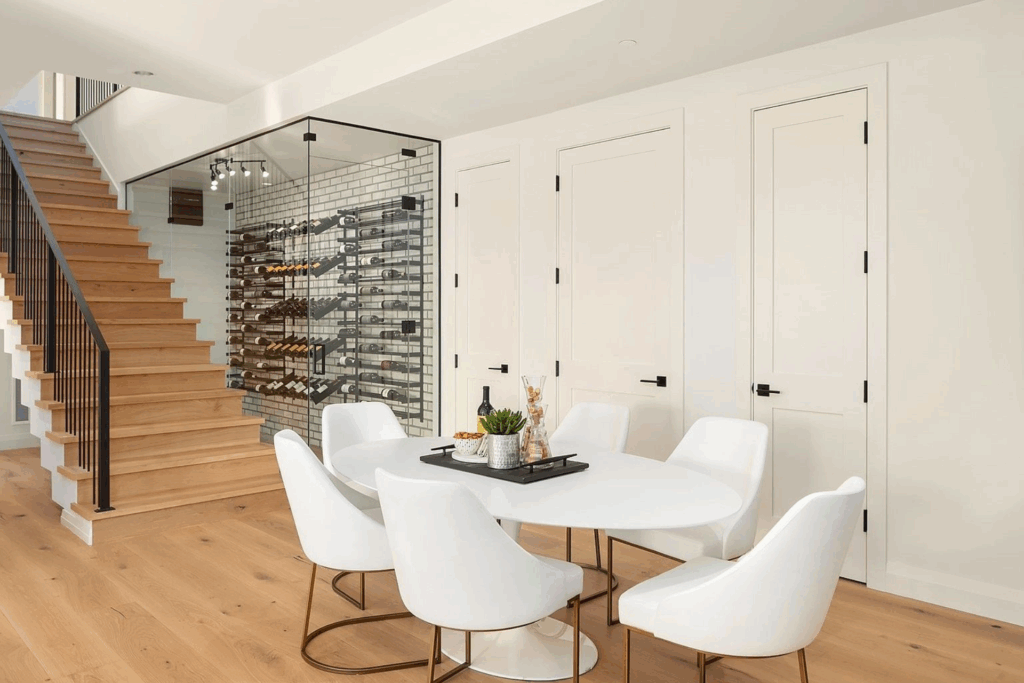If you’re wondering whether self-contained wine cooling units are a good fit for large wine cellars, the short answer is: they’re generally not ideal for larger spaces. Here’s a more detailed breakdown:
Pros of Self‑Contained Units
- All-in-one design: Compact and easy to install—often doable as a DIY project—with no external condenser to mount.
- Lower initial cost: Typically range between $1,500–$3,000, making them budget-friendly.
- Minimal setup: No need for external drainage or complex ductwork.
Limitations for Large Cellars
- Cooling capacity constraints: Effectively designed for spaces up to ~1,000–2,000 cubic feet, with many maxing out around 1,000 cu ft.
- Noise and heat issues: These units exhaust warm air back into the room and operate noisily—especially problematic in or near living areas.
- Energy inefficiency: Often less efficient than split systems, particularly when cooling larger volumes or in hotter climates.
- Lack of zone control: Usually limited to controlling a single temperature zone—less flexible for varied storage needs.
Better Alternatives for Large Wine Cellars
For larger cellars, consider split systems or ducted alternatives:
- Components are separated: evaporator inside, condenser outside.
- Quieter operation and greater cooling capacity.
- Better energy efficiency and longevity.
- Often cost more ($9,000–$15,000) and require professional HVAC installation.
- Cooled air delivered via ductwork from a hidden unit, keeping the cellar clean and quiet.
- Ideal for larger, luxury, or design-conscious installations.
- Price range: approximately $3,500–$7,000, excluding installation.
- Designed for large or temperature-sensitive cellars.
- Offer stronger cooling power, quieter operation, and advanced humidity control.
- Can accommodate complex layouts or zoned systems.
In the Words of Users
From communities like Reddit:
“Wine cooling units come in two forms… I used both. The first is a glorified window air conditioner… The other is similar to a minisplit… This is what’s running my 3000+ cellar (a small Wine Guardian unit).”
Users with larger installations lean strongly toward split systems for their effectiveness and long-term reliability. Explore Cool Wine Cellar that carries the most exclusive range of self contained wine cooling units, featuring WhisperKOOL , Wine Guardian , CellarPro , Breezeair all in one place. Get free quotes & faster lead times today!
Summary Table
| Cellar Size & Needs | Self-Contained Unit | Split / Ducted / Advanced Systems |
|---|
| Small to medium (≤ 1,000 cu ft) | Affordable, DIY-friendly, easy to install | Often more powerful than needed |
| Large (> 1,000 cu ft) | Underpowered, noisy, inefficient | Designed for capacity, quiet, efficient |
| Zoned cooling or low-noise required | Limited control; noise can be intrusive | Ideal for tailored temperature zones and quiet setups |
| Aesthetic considerations | Visible unit, noisy output | Hidden components, clean design options |
Final Recommendation
For a large wine cellar, a self-contained wine cooling unit is usually not the best choice—you’ll likely hit performance, noise, or efficiency limits. Instead, split or ducted systems, especially those built for large-scale or luxury applications, offer:
- Superior cooling capacity
- Lower noise
- Zoned temperature control
- Better energy performance






